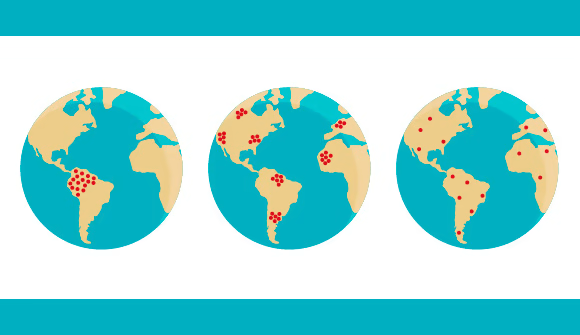Your cart is currently empty!
M09.01.01 Epidemiological measures
Epidemiology is the science of understanding the distribution and determinants of health-related states within a population. This field examines patterns of diseases and identifies factors that influence their prevalence and spread.
Key Concepts in Epidemiology
- Endemic: The consistent and expected rate of disease within a specific geographic area. An endemic disease maintains a stable presence without significant variations over time.
- Epidemic: A sudden increase in the incidence of a disease beyond what is expected, usually in a wider geographic area than endemic levels. Epidemics often have a visual “spike” when plotted over time.
- Pandemic: A worldwide spread of an epidemic, affecting multiple countries and large populations.
- Epidemic Curve: A histogram or other visual representation plotting the number of disease cases over time. An epidemic curve typically shows a sudden peak, indicating the rise and fall of cases during an epidemic.

Epidemiologic Tools
Epidemiology relies on quantifying disease occurrence through ratios and rates. The rate is calculated by comparing the actual cases (numerator) to those at risk (denominator).
The formula for Rate Calculation
Rate= (Number of Actual Cases/Population at Risk)×Multiplier (e.g., 100,000)
Rates can be scaled to different multipliers, such as per 100,000 people (commonly used by the CDC) or per 1,000 people (vital statistics).
Example Table: Disease Incidence Over Months
| Month | Disease 1 (Endemic) | Disease 2 (Epidemic in March & April) |
|---|---|---|
| January | 3 | 5 |
| February | 4 | 5 |
| March | 3 | 8 |
| April | 4 | 8 |
| May | 4 | 5 |
| June | 4 | 5 |
| July | 3 | 5 |
| August | 3 | 5 |
- Interpretation: Disease 1 remains stable month-to-month, illustrating an endemic pattern. Disease 2, however, peaks in March and April, indicating an epidemic.
Case Scenario Analysis
Consider a scenario where a Japanese farmer unknowingly sells salmonella-infected meat. Within 2 days, hundreds of villagers experience gastroenteritis. This sudden increase in cases is an example of an epidemic.
If the infected beef is distributed nationally, it may not significantly alter the endemic rate of gastroenteritis across Japan because the proportion of cases would still be relatively low compared to the national population.
Points to Remember
- Endemic: Regularly occurring disease within a specific area.
- Epidemic: A sudden increase in disease incidence beyond normal expectations.
- Pandemic: A global spread of an epidemic.
- Epidemic Curve: Visual tool to track disease incidence over time.
- Rates: Expressed per 100,000 or 1,000 people to contextualize disease prevalence within a population.
